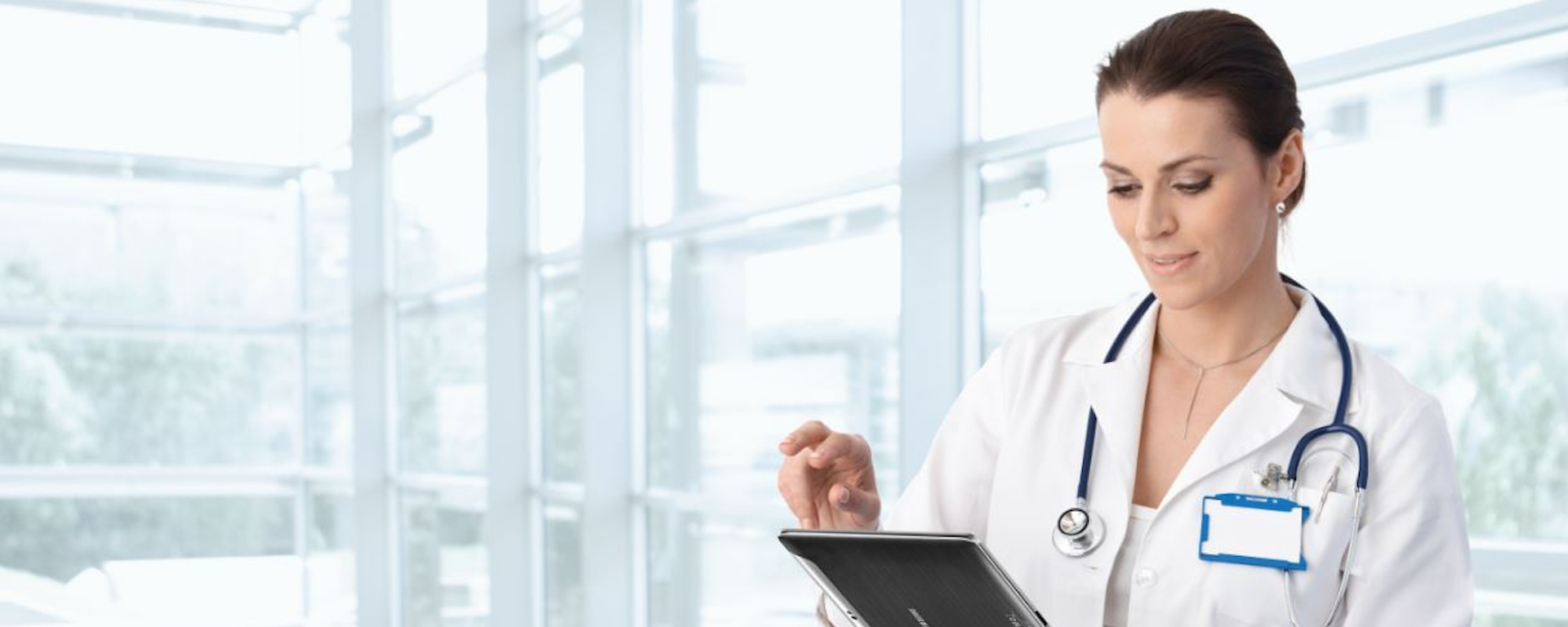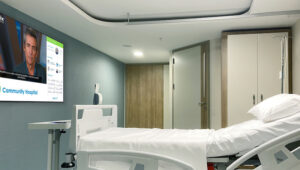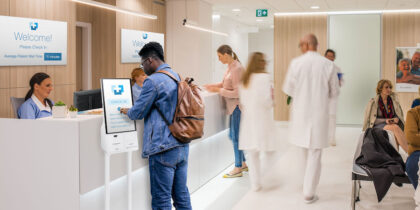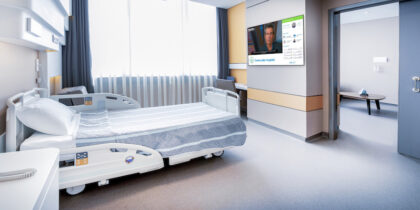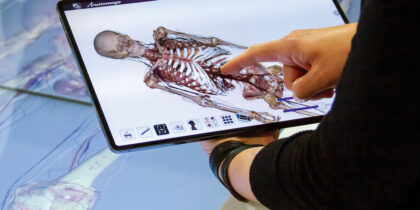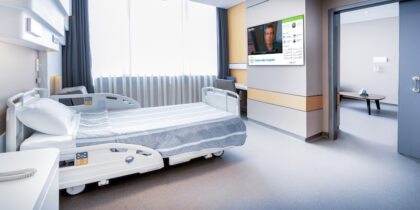Jane is a modern home healthcare worker. Each morning, she uses her company-issued mobile device to view the day’s case schedule and find directions to clients’ homes. When she arrives, she clocks in via a wireless time card app and accesses the patient’s electronic health records (EHR), including any recent doctor’s notes or lab results.
Her first patient of the day has a rash on his leg. Since this is a new symptom, Jane takes a picture with her device, uploads it to the patient’s file and gets immediate feedback from her colleagues. One of them, a dermatologist, suggests several treatment options in line with the patient’s drug allergies, accessible via the EHR. She also consults a reference guide on her device to prevent any unintended drug interactions. At the end of her visit, Jane documents her recommendations and other observations on a wireless check-off form in the patient’s EHR, ensuring that collaborating medical professionals have current data on the patient.
As Jane clocks out, she notices she’s already 15 minutes late for her next appointment. Thankfully, John, her colleague working down the street, finished his first assignment 15 minutes early. Since the home office monitors their GPS locations, administrators have already sent John to cover her next patient and updated her schedule as well.
This is the future of home healthcare, and it has arrived just in time.
Facing Growing Challenges in a Growing Industry
Home healthcare is a diverse market segment that includes hospice workers, skilled nursing agencies and other short- and long-term home-based care providers. The industry is growing rapidly, nearly doubling in size since 2004. In the U.S. alone, these roving medical providers produce approximately $79 billion in annual revenue and account for 2.7 percent of national healthcare expenditures, according to a 2013 report by the Centers for Medicare & Medicaid Services. Several factors contribute to this growth. For one, the oldest baby boomers are now entering their 70s, but want to remain independent at home. Meanwhile, the Affordable Care Act (ACA) has led to more insured consumers, who can now afford in-home care. The ACA is also driving the U.S. healthcare system to transition away from hospital-based care by imposing penalties for excessive hospital readmissions.
However, it can be difficult for many home-based providers to reap the benefits. Many companies are still struggling with burdensome paper-based processes, inefficient scheduling and an inability to provide real-time information to geographically-dispersed workforces. To meet these challenges, forward-thinking home healthcare providers are turning to mobile technology.
Empowering Mobile Workers With Mobile Technology
Smartphones, tablets, wearables and even remote patient monitors enable home health agencies to better manage mobile employees, decrease administrative paperwork, communicate up-to-date information to and from caregivers, comply with government regulations and increase the quality of patient care. Philadelphia-based BAYADA Home Health Care is already cashing in on these benefits, providing real-time patient data to caregivers from 250 locations around the U.S. while also streamlining workflows in the field. To accomplish this, BAYADA partnered with Samsung and medical application provider Homecare Homebase to build and implement a custom mobile solution for the Samsung Galaxy Tab. After a limited pilot, BAYADA issued 4,000 tablets to its workers, who can now download assignments, view maps and directions, and access patient records from a single device. The results: reduced employee travel time, increased caregiver productivity (including less after-hours paperwork) and overall improvement in patient satisfaction.
Transitioning to Mobile Healthcare
An increasing number of home healthcare agencies are looking to integrate mobile technology in their day-to-day operations. The first step toward going wireless is to assess the organization’s needs. Assemble a strategy team to lead the transition and include both leadership and actual users of the mobile solutions. Their goal is to clearly define and prioritize the pain points this technology will alleviate, which might include reducing paperwork, improving patient care, optimizing dispatch procedures, meeting regulatory standards or creating new revenue streams.
Secondly, agencies must decide which type of mobile device and operating system will be the best fit based on their predetermined needs. What does the device need to do? Will the mobile solution work well on a smartphone or will it require the display size and processing power of a tablet? Will remote workers always have Wi-Fi access or will cellular service be necessary? Equally as important, do the device and operating system ensure enterprise-grade security compliant with HIPAA requirements?
The final step in the process is to identify the right mobility partners. These include device manufacturers, wireless carriers, app developers and systems integrators. Ask for recommendations from peers, interview candidates and evaluate the strengths each provider brings to the table. Who should be trusted as an adviser? Which wireless carriers have the most reliable service in the area and will offer group rates for remote workforces? Determine whether to purchase prebuilt applications or create a customized solution. Finally, depending on the level of IT support, evaluate the pros and cons of cloud-based versus on-premises solutions.
To learn more about mobile technology for home healthcare, download our latest whitepaper.
